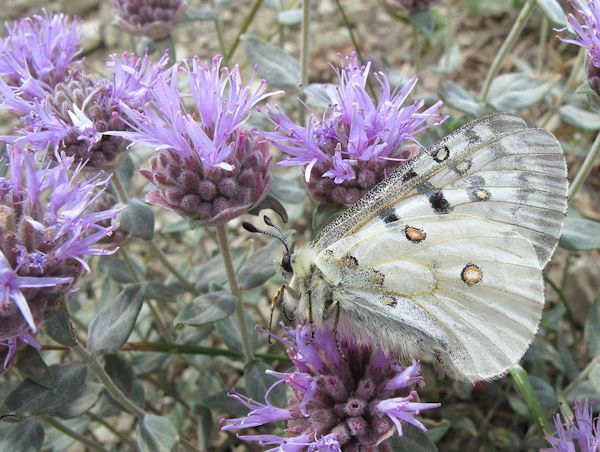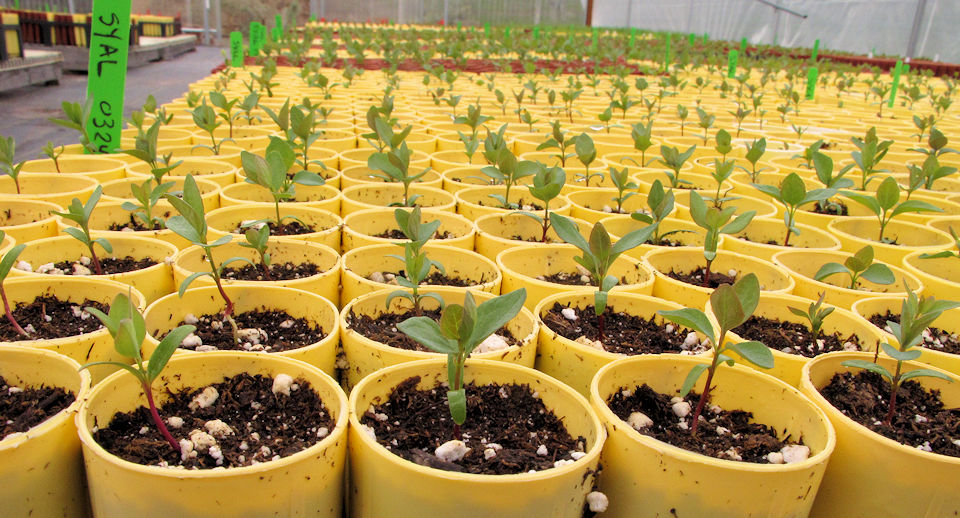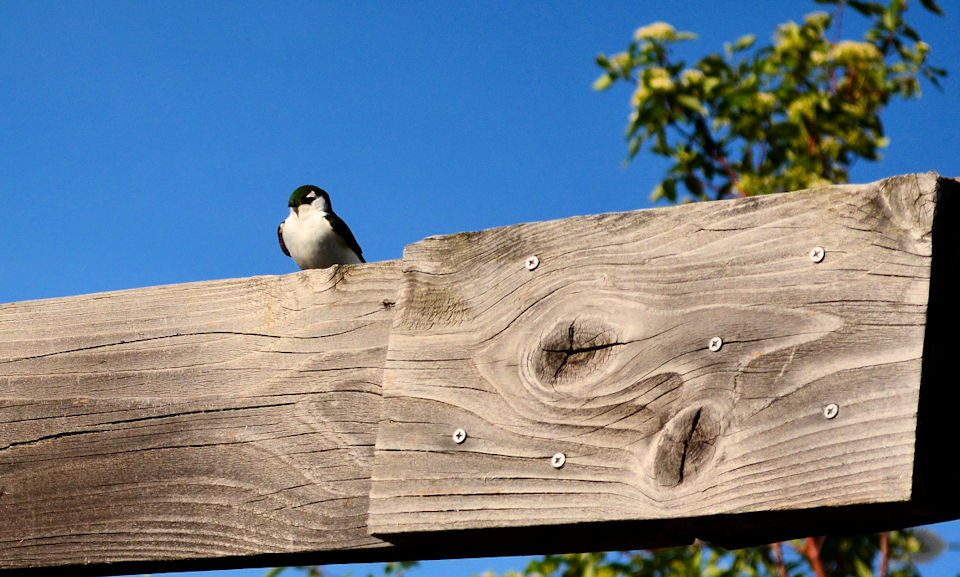Attracting MORE Insects with Native Plants – Part 2: Butterflies
(The snow is finally retreating! Derby Canyon Natives will open for retail sales Friday, March 21, and thereafter be open every Friday 9-5 and Saturday 8-12).
There are close to 150 species of butterflies found in Washington state. Most are year-round residents, overwintering as either eggs, larvae, pupae or adults in protected locations, such as under leaf litter or within old seed pods. A few species leave our cold winters for warmer climes, including the Monarch, Painted Lady and California Tortoiseshell.
 Western Tiger Swallowtail on silvercrown (Cacaliopsis nardosmia)
Western Tiger Swallowtail on silvercrown (Cacaliopsis nardosmia)
Butterflies are inextricably linked to native plants. Most adult butterflies are not too picky about what they feed upon so long as the plant nectar is accessible, a matter of tongue length versus flower depth. The larvae (caterpillars), however, have very particular needs as to their host plants, in many cases feeding on a single native plant family or even genus. Anise Swallowtail larvae feed only on members of the Carrot Family (Apiaceae) and Cabbage Whites feed on plants in the Mustard Family (Brassicaceae); both plant families have many species that finding food is usually not a problem. Butterflies with a more restricted larval diet include most Fritillaries (feeding only on violets (Viola)), the Mountain Parnassian (on stonecrop (Sedum)), and the California Tortoiseshell (on Ceanothus). I have seen bushes of snowbrush ceanothus (C. velutinus) totally defoliated in July by the California Tortoiseshell yet alive with masses of wriggling pupae hanging from twigs.
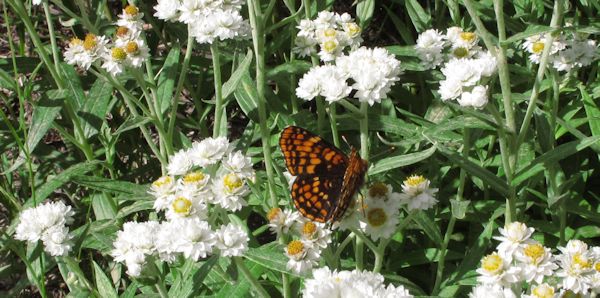 Checkerspot on pearly everlasting (Anaphalis margaritacea)
Checkerspot on pearly everlasting (Anaphalis margaritacea)
To attract butterflies to your landscape you should include flowers attractive to the adults as well as larval food plants to encourage the adults to stick around and lay eggs. Sunny, open areas are best. Plant a variety of flowering species, aiming to have at least three blooming at all times from April through September. A diversity of flower types is important as well. Flat, open flowers or inflorescences, found in members of the Sunflower Family (Asteraceae), Carrot Family (Apiaceae) and wild buckwheats (Eriogonum), provide landing platforms and masses of flowers for the adults to probe for nectar. Penstemons and lupines have very different flower forms that some longer tongued butterflies seek out. Plants in the Mint Family (Lamiaceae) have especially attractive nectar, so consider Agastache, Salvia and Monardella. Rabbitbrush (Ericameria) and goldenrod (Solidago) both provide masses of bloom in late summer into fall. Non-native garden flowers also attract adult butterflies; good choices include lavender, Russian sage, cosmos, sunflowers, borage, oregano and sedum.
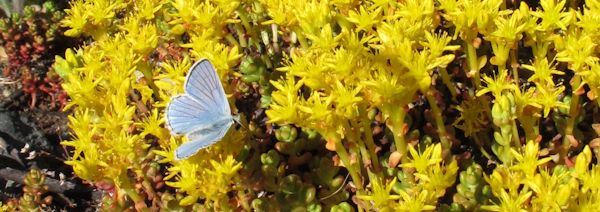 Blue copper on stonecrop (Sedum divergens)
Blue copper on stonecrop (Sedum divergens)
Good larval host plants for Central Washington, and the butterfly larvae they feed, include:
- Wild buckwheat (Eriogonum) many blues, coppers, hairstreaks, Mormon Metalmark
- Milkweed (Asclepias) Monarch
- Lupine (Lupinus) blues and sulphurs
- Desert parsley (Lomatium) Anise Swallowtail
- Violet (Viola) fritillaries
- Penstemon (Penstemon) Variable Checkerspot
- Aster (Symphyotrichum) several checkerspots and crescents
- Mustards most whites, Sara Orangetip
- Grasses wood nymphs, most skippers
- Willows (Salix sp.) Mourning Cloak, Viceroy, Western Tiger Swallowtail
- Ceanothus (C. velutinus, C. sanguineus) Cal. Tortoiseshell, Pale Swallowtail, Brown Elfin, Spring Azure
- Serviceberry (Amelanchier alnifolia) Two-tailed Swallowtail
- Currants (Ribes sp.) Green and Hoary Comma
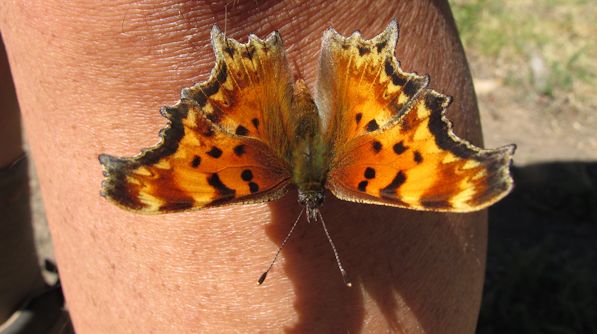 Hoary comma on human (Homo sapiens)
Hoary comma on human (Homo sapiens)
To learn much more about Washington butterflies, their identification and their hosts there are excellent books, particularly Field Guide to the Butterflies of Cascadia by Robert Pyle, and Life Histories of Cascadia Butterflies by David James and David Nunnallee. Online, check out
- WA Dept. of Fish and Wildlife //wdfw.wa.gov/living/butterflies/
- The Xerces Society www.xerces.org/




